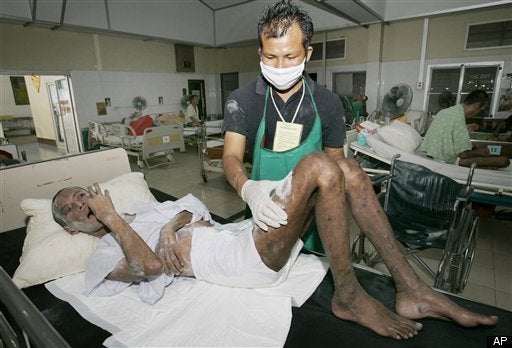
Recent moves by the Obama Administration coupled with important scientific advances provide reason to be hopeful about the quest for an AIDS vaccine this World AIDS Vaccine Day.
Since taking office, the Obama Administration has been grappling with the challenges of coordinating a long-term, sustainable response to the HIV/AIDS pandemic. Despite laudable successes in expanding access to HIV drugs, new HIV infections continue to outpace the number of individuals placed on treatment: for every two individuals who go on treatment, five are newly infected.
These challenges underscore why the U.S. commitment to develop and distribute new prevention tools, especially effective preventive AIDS vaccines, is so important.
A leaked, early draft of the Presidential Study Directive-7 (PSD-7) defining the Administration's vision and strategy for global development clearly articulates the importance of new game-changing innovations, like vaccines, to address pressing health and development challenges. In fact, the draft document highlights research and development for powerful new health technologies as one of its key pillars.
Along these lines, earlier this month at a town hall meeting USAID Administrator Rajiv Shah pledged that the agency he leads will find "new ways to leverage science and technology to develop and deliver those tools and innovations that we believe can lead to exponential growth and transformational change."
Secretary of State Hillary Clinton followed that up at a recent speech to State Department staff celebrating Foreign Affairs Day by saying that USAID should be the "premier development research agency in the world" and that the U.S. should help develop, spread and implement game-changing technologies.
While these signals from the Administration are encouraging, it would be better still to see this kind of commitment to researching and developing new global health technologies explicitly spelled out in President Obama's Global Health Initiative (GHI). The GHI is intended to provide an integrated and comprehensive strategy to address the crises of health and preventable illnesses that afflict the world's poorest and most vulnerable people and that cost the world untold billions of dollars in care, treatment and lost productivity.
Reaching the GHI goals will require new ways of combating diseases that disproportionately burden developing countries. This in turn will require long-term support for research into new diagnostics, medicines and vaccines to address HIV, malaria, TB and a variety of neglected diseases. Global health tools for diseases of poverty often attract limited private-sector interest and so depend on significant philanthropic and public-sector support.
It's important, moreover, that new interventions be created not only for the developing world, but with the developing world. Consider that the recent, major advances in AIDS vaccine R&D occurred as the result of collaborations between scientists in the developed and developing worlds. A clinical trial in Thailand, a joint project of the Thai and U.S. government, provided the first demonstration that an AIDS vaccine can protect humans from HIV infection. The vaccine candidate tested was only modestly effective but provides researchers a platform upon which to try to improve.
In a second advance, the product of collaboration between developed -- and developing-world researchers, scientists discovered new, powerful antibodies to HIV that may provide valuable models for designing vaccine candidates. Many of these partnerships were supported with funding from USAID.
The engagement of developing world researchers -- as well as policy makers and community members -- helps to ensure that new global health technologies, like an AIDS vaccine, will be accessible where they are needed most. At the same time, involving researchers in the developing world builds local scientific and technological capacity that can serve as an engine for economic growth. The draft PSD-7 helpfully endorses the notion that sustainable development depends on the cultivation of scientific and technological capacity to help recipient nations help themselves.
The Global Health Expansion, Access to Labor, Transparency and Harmonization Act (HR 4933, or the Global HEALTH Act of 2010) -- introduced by Congresswoman Barbara Lee, co-author of this piece -- recognizes these needs, among others. The bill prescribes that the U.S. develop "specific plans to improve research collaboration with countries receiving health-related United States foreign assistance." It stipulates that the U.S. provide "support for developing indigenous research capacity" that will ultimately enable recipient countries "to pursue their own research agenda." These provisions are key to a successful GHI.
As the Administration's global health strategy continues to take shape, we hope that a strong commitment to researching and developing new global health technologies, such as an AIDS vaccine, will be front and center and clearly articulated in its Global Health Initiative. That would make this World AIDS Vaccine Day a truly hopeful day for the millions who have supported the quest to end the pandemic once and for all. As USAID Administrator Rajiv Shah said recently, "humanity demands an AIDS vaccine."
U.S. Representative Barbara Lee, D-Oakland, is a seven-term congresswoman and chair of the Congressional Black Caucus. Dr. Seth Berkley is founder, president and CEO of the International AIDS Vaccine Initiative.